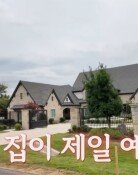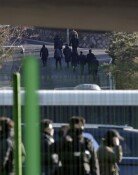Lonely deaths from COVID-19
Lonely deaths from COVID-19
Posted June. 17, 2021 07:16,
Updated June. 18, 2021 11:52
Around 2,000 people in Korea have lost their lives to COVID-19 since the first confirmed case was found in January 20 last year. Some of these deaths include lonely deaths, of people dying alone without anyone bidding goodbye. The deaths have been burdensome to bereaved families that had not been in contact with the deceased for some time. The younger brother that refused to take his brother’s remains, the daughter that refused to hold her mother’s funeral because they were legally not related…the ones without families or friends passed away in solitude.
The number of lonely deaths due to COVID-19 has not been officially recorded yet, because the Act on the Prevention and Management of Lonely Deaths, which mandates the investigation and statistical recording of lonely deaths, was recently executed on April 1. The Hero Contents Team at the Dong-A Ilbo covered cases on lonely deaths from COVID-19 and discovered cases from facilities treating mental illnesses or koshiwons, or study dorms. A male in his 50s had passed away from COVID-19 after worrying after his fellow friends in the dorms. His family refused to take his body and the man was cremated alone.
Some of the koshiwon facilities might have as well been prisons for the lonely. A koshiwon located in Dongdaemun-gu of Seoul, where six people out of 24 were confirmed with the virus, did not have any ventilation facilities other than the common kitchen and bathroom. They lived in confined rooms likened to cells without any ventilation facilities. Most of the residents were in their 60s, doing odd jobs for a living.
Risks of lonely deaths from COVID-19 are everywhere. One-person households in Korea are rapidly increasing and account for 30.4% of total households, while 61.1% of one-person households are in their 50s or older. There is a chance that those infected and killed by the virus could pass away without friends or family knowing. In Japan, where the social issue of lonely deaths surfaced in the 1970s, those in their 50s or 60s who have retired or lack social interaction, in addition to the elderly living alone, are classified as groups with risk of lonely deaths. In the UK., loneliness is defined as a socially infective disease and appoints a Minister of Loneliness to fight loneliness.
Generally, disasters reinforce inequality, particularly so for unprecedented infectious diseases such as COVID-19. It is crucial to build social safety nets that regularly check on the safety of one-person and senior households. Those that feel socially isolated should be looked after by public service. We need to pay attention to those living in congested environments to check on the risks of COVID-19. By managing contingency risks ahead, we will be able to prevent lonely deaths from COVID-19.







